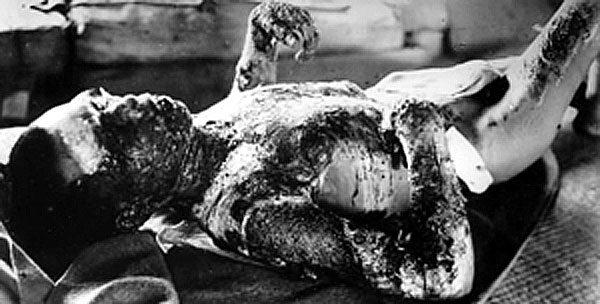"Why Did the U.S. Bomb Hiroshima and Nagasaki? 5 Shocking Reasons Behind the Atomic Decision"
"Discover the military, political, and ethical factors behind America’s 1945 atomic bombings. Was Japan’s surrender inevitable? Explore Truman’s dilemma and the bomb’s lasting legacy."


Why Did the U.S. Drop Atomic Bombs on Japan? The Complex Decision Behind Hiroshima and Nagasaki
The atomic bombings of Hiroshima and Nagasaki in August 1945 remain among the most controversial and consequential decisions in modern history. This blog unpacks the five key factors behind the U.S. decision, combining historical analysis, military strategy, and geopolitical context to explain why America chose to unleash nuclear warfare.
1. The Race to End the War: Saving American Lives
By mid-1945, World War II in the Pacific had reached a brutal stalemate. Japan’s refusal to surrender, despite devastating losses, led Allied planners to prepare for Operation Downfall—a two-stage invasion of Japan’s home islands. Military estimates predicted 1 million U.S. casualties and even higher Japanese losses 14. The battles of Iwo Jima (1945) and Okinawa (1945) demonstrated Japan’s willingness to fight to the death, with civilians often joining the resistance .
President Harry Truman, who inherited the presidency after Franklin Roosevelt’s death, faced immense pressure to avoid a prolonged conflict. The Manhattan Project’s successful atomic bomb test in July 1945 offered a way to force Japan’s surrender without a costly invasion .
2. Japan’s Unconditional Surrender Refusal
The Potsdam Declaration (July 26, 1945) demanded Japan’s unconditional surrender, threatening “prompt and utter destruction” if ignored . Japan’s militarist government rejected the ultimatum, vowing to continue fighting. Intelligence reports revealed Japan was mobilizing civilians, including children, for a “national suicide resistance”.
Truman’s advisors, including Secretary of War Henry Stimson, argued the atomic bomb was the only way to break Japan’s resolve. The alternative—prolonged conventional bombing and blockade—risked starvation for millions of Japanese civilians .
3. The Manhattan Project: A Scientific and Military Gamble
The U.S. launched the Manhattan Project in 1942, fearing Nazi Germany might develop nuclear weapons first. Over 130,000 workers and scientists, including J. Robert Oppenheimer, raced to create the bomb at sites like Los Alamos and Oak Ridge .
After Germany’s defeat in May 1945, the focus shifted to Japan. The July 16 Trinity Test in New Mexico confirmed the bomb’s viability. Truman viewed the $2 billion investment as a strategic necessity, stating, “We have spent the money, and we have got to use it”.
4. Geopolitical Strategy: Sending a Message to the Soviet Union
The bombings occurred as Cold War tensions began to simmer. At the Potsdam Conference (July 1945), Truman hinted about the bomb to Soviet leader Joseph Stalin, aiming to assert U.S. dominance post-WWII . Some historians argue the bomb served dual purposes: ending the war and deterring Soviet expansion .
However, Truman’s primary focus remained Japan. As he later wrote, “The atomic bomb was no ‘great decision’… It was merely another powerful weapon in the arsenal of righteousness” .
5. The Human Toll and Ethical Debate
Hiroshima (August 6, 1945): The Enola Gay dropped “Little Boy,” killing 80,000 instantly and leveling 5 square miles. Radiation poisoning raised the death toll to 135,000 by year’s end .
Nagasaki (August 9, 1945): Cloud cover diverted Bockscar from Kokura to Nagasaki. “Fat Man” killed 40,000 immediately, with 60,000+ injured .
Critics argue Japan was already near surrender, citing Soviet plans to invade Manchuria and U.S. firebombing campaigns. Others highlight the hibakusha (survivors) who suffered lifelong health effects, calling the bombings a moral failure .
FAQ Section
Q: Could Japan have surrendered without the atomic bombs?
A: While some historians argue Japan was nearing collapse, its leaders rejected the Potsdam terms and refused to surrender until after Nagasaki .
Q: Were there alternatives to the atomic bombs?
A: Options included a demonstration blast or continued firebombing, but Truman’s advisors deemed these ineffective .
Q: How did the bombings affect U.S.-Soviet relations?
A: The U.S. atomic monopoly intensified Cold War tensions, spurring the Soviet Union to accelerate its nuclear program.
